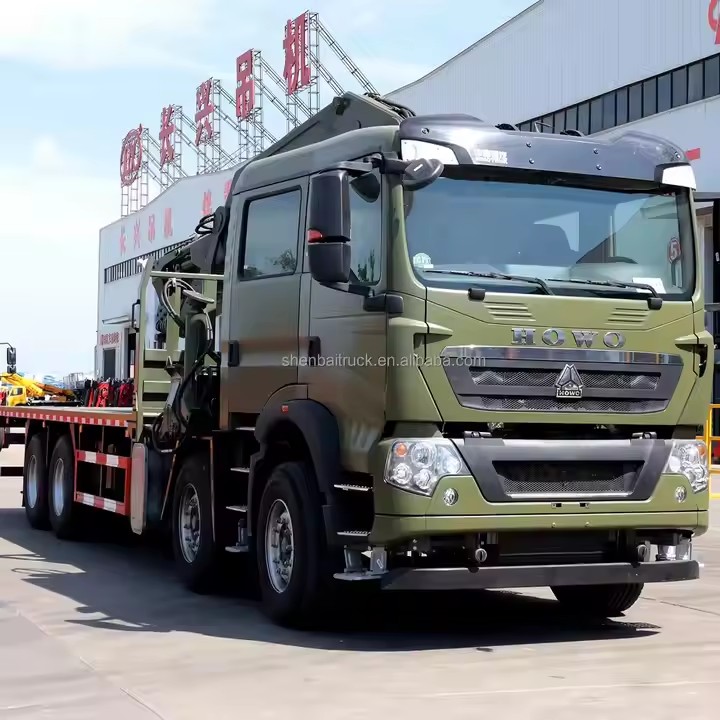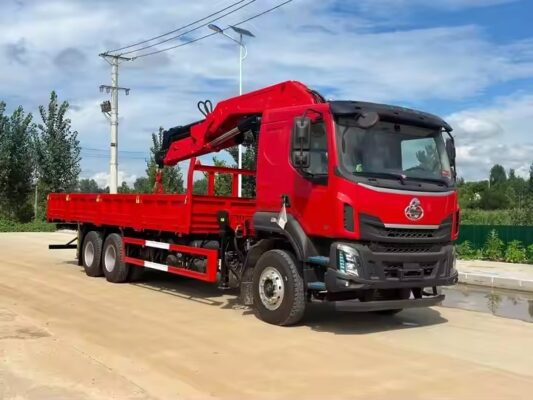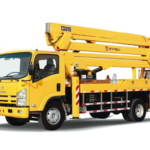The hydraulic system provides power for the operational devices of an engineering crane. Proper maintenance of the hydraulic system is crucial for enhancing the crane‘s operational reliability. Ka tloaelo, hydraulic systems must undergo flushing before they are officially put into use. The purpose of this flushing process is to remove contaminants, metal debris, fibrous compounds, iron cores, and other foreign materials from the system. Even if the system is not entirely damaged, these impurities can cause a series of malfunctions within the first two hours of operation.
Ka hona, it is essential to follow these steps for cleaning the hydraulic system oil circuit:
1. Cleaning the Oil Tank
First, use a fast-drying cleaning solvent to thoroughly clean the oil tank. After the tank is cleaned, filtered air should be used to blow out any residual solvent. This process ensures that no solvent is left inside the tank, which could potentially contaminate the hydraulic oil.
2. Flushing the Entire System’s Pipelines
Next, the entire hydraulic system’s pipelines need to be cleaned. In some cases, it may be necessary to soak the pipelines and their joints in cleaning solutions. This step helps to remove any internal contaminants and ensures that the system’s pipes are free of debris.
3. Installing Oil Filters in the Pipelines
During the cleaning process, oil filters should be installed within the pipelines. These filters serve as a protective measure for the supply and pressure lines of the valves, preventing any debris from damaging the hydraulic components. It is important to check the oil filters frequently during the flushing process to ensure that they are not clogged with contaminants.
4. Installing a Flushing Plate on the Collector
A flushing plate should be installed on the collector in place of precision valves such as electro-hydraulic servo valves. This step is essential for cleaning the system without causing damage to sensitive components, allowing oil to flow through the collector and flush the entire system.
5. Checking Pipe Sizes and Connections
It is vital to inspect all the system’s pipes to ensure that their sizes are appropriate and that all connections are secure. This inspection is crucial for preventing potential leaks or inefficiencies during system operation. Any improper connections or mismatched pipe sizes should be corrected before further use.
6. Additional Considerations for Electro-Hydraulic Servo Valves
If the system uses electro-hydraulic servo valves, it is important to note that the flushing plate should be designed to allow the oil to flow from the supply lines directly into the collector and return to the oil tank. This ensures that the oil circulates continuously, washing through the system and allowing the oil filters to remove solid particles. It is important to check the filters every 1 ho 2 hours during the flushing process to prevent clogging from contaminants. If the filter becomes clogged, it should be replaced immediately without opening the bypass.
7. Cleaning Period and Final Steps
The cleaning cycle depends on the system’s design and the extent of contamination. If the sample of the filtered medium shows little to no foreign contaminants, the new oil filter can be installed, the flushing plate removed, and the valve components can be installed to complete the system’s cleaning.

Regular Maintenance Plan for Hydraulic Systems
Establishing a regular maintenance routine for the hydraulic system is essential for keeping the crane operating efficiently. The following is a recommended maintenance schedule for the hydraulic system:
1. Inspect and Replace the Oil Filter Every 500 Hours or 3 Months
It is important to regularly check and replace the oil filter every 500 working hours or at least once every three months, whichever comes first. A clogged oil filter can hinder the efficiency of the hydraulic system, so timely replacement is necessary to ensure smooth operation.
2. Regularly Clean the Inlet Oil Filter of the Oil Pump
The inlet oil filter of the hydraulic pump should be cleaned periodically to ensure optimal fluid flow. The cleanliness of this filter directly affects the oil pump’s performance, as a blocked filter can cause a drop in pressure and operational inefficiency.
3. Check for Contamination in the Hydraulic Oil
Regularly checking the hydraulic oil for signs of acidification or contamination by other foreign materials is vital. One of the easiest ways to detect if the oil has deteriorated is by checking its smell. If the oil has a rancid or sour odor, it indicates that it has undergone chemical changes and may need to be replaced.
4. Repair Leaks in the System
The hydraulic system must be inspected regularly for any leaks. Leaks can significantly reduce the system’s efficiency and cause a loss of pressure, leading to reduced lifting capacity and potential damage to other components. Leaks should be repaired immediately to prevent further system degradation.
5. Ensure That No Foreign Particles Enter the Oil Tank
It is essential to keep foreign particles from entering the hydraulic oil tank. This includes preventing contaminants from entering through the tank’s vent cap, filter seat, return oil lines, and any other openings. The oil tank should be kept sealed and the filter system should be maintained to prevent external debris from contaminating the hydraulic fluid.
Hydraulic Oil Quality Monitoring
Monitoring the quality of hydraulic oil is crucial for the performance and longevity of the system. One way to determine if the hydraulic oil is still in good condition is by performing a regular oil analysis. This analysis can detect signs of oxidation, contamination, or the presence of foreign particles in the oil. If any issues are found, it is important to address them promptly by replacing the oil and cleaning the system.
Steps for Hydraulic Oil Analysis
- Visual Inspection: Look for any discoloration or the presence of suspended particles in the oil. This can be a clear indication that the oil is contaminated or has started to degrade.
- Smell Test: As mentioned earlier, the oil’s smell can indicate whether it has undergone chemical changes. If the oil smells sour or rancid, it may have started to oxidize.
- Viscosity Check: The viscosity of the hydraulic oil should be measured regularly. Changes in viscosity can affect the performance of the hydraulic system. If the oil becomes too thick or too thin, it may not provide adequate lubrication or pressure to the components.
- Contamination Detection: Use specialized equipment to test the oil for contamination by particles, moisture, or other substances. This will help determine if the oil is still capable of providing proper lubrication and protection.
Oil Replacement
If the analysis reveals that the hydraulic oil is contaminated or degraded, it should be replaced immediately. To replace the oil, follow these steps:
- Drain the Old Oil: Remove all the old hydraulic oil from the system. This should be done in a controlled manner to prevent spills and contamination.
- Clean the System: After draining the old oil, flush the system with a cleaning solvent to remove any remaining contaminants. Make sure to replace all oil filters before refilling the system with new hydraulic oil.
- Refill with Fresh Oil: Use high-quality hydraulic oil that meets the specifications recommended by the manufacturer. Ensure that the oil is free from contaminants and has the proper viscosity for the operating conditions.

Qetello
The hydraulic system plays a vital role in the operation of cranes, and its maintenance is crucial for ensuring the crane’s efficiency and reliability. Regular cleaning of the hydraulic oil circuit, along with periodic checks and replacements of oil filters, ensures that the system remains free from contaminants and operates smoothly. Adhering to a well-structured maintenance plan helps to prevent system failures, extend the lifespan of components, and reduce operational downtime. By following the recommended maintenance practices and keeping the hydraulic system clean and well-maintained, crane operators can ensure that their equipment operates at peak performance, even under challenging conditions.









